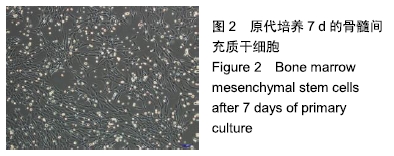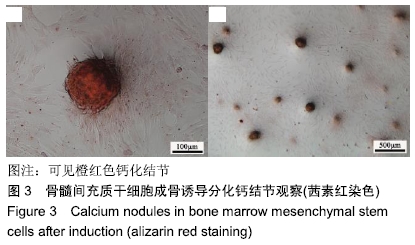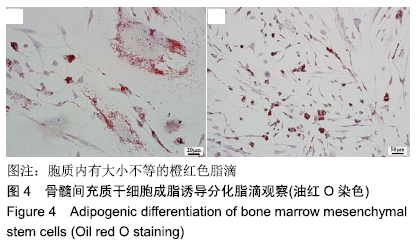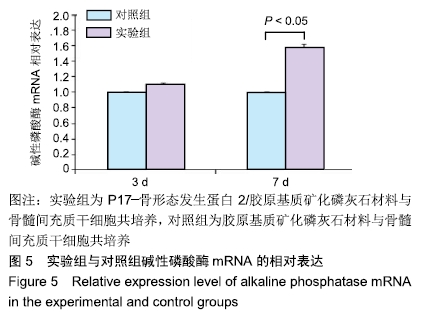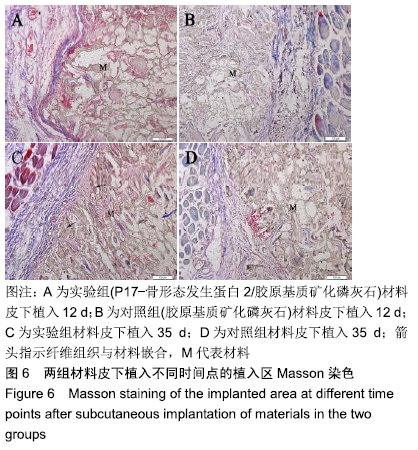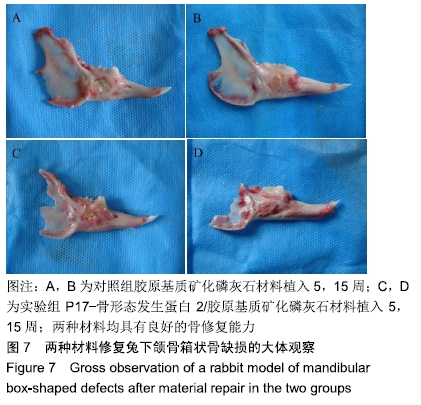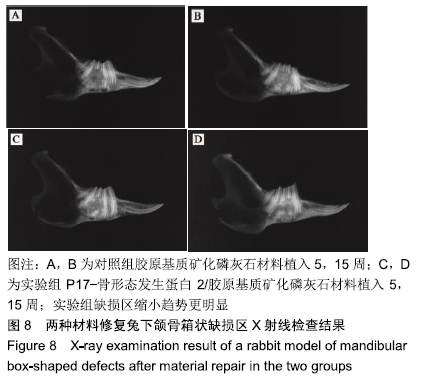[1] 孙伟,李子荣,史振才,等. 纳米晶胶原基骨和骨髓间充质干细胞复合修复兔股骨头坏死缺损的研究[J].中国修复重建外科杂志,2005,19(9): 703-706.
[2] TAN R, NIU X, GAN S, et al. Preparation and characterization of an injectable composite. J Mater Sci Mater Med. 2009;20(6):1245-1253.
[3] DALBY MJ, GIANNARAS D, RIEHLE MO, et al. Rapid fibroblast adhesion to 27nm high polymer demixed nanotopography. Biomaterials. 2004; 25(1): 77-83.
[4] CURTIS AS, GADEGAARD N, DALBY MJ, et al. Cells react to nanoscale order and symmetry in their surroundings. IEEE Trans Nanobioscience. 2004; 3(1): 61-65.
[5] LONG MW, ROBINSON J A, ASHCRAFT EA, et al. Regulation of human bone-marrow-derived osteoprogenitor cells by osteogenic growth-factors. J Clin Invest. 1995;96(5):2541-2541.
[6] PARTRIDGE K, YANG XB, CLARKE NM, et al. Adenoviral bmp-2 gene transfer in mesenchymal stem cells: in vitro and in vivo bone formation on biodegradable polymer scaffolds. Biochem Biophys Res Commun. 2002; 292(1): 144-152.
[7] GRIESENBACH U, GEDDES DM, ALTON EW. Gene therapy progress and prospects: cystic fibrosis. Gene Ther. 2006;13(14):1061-1067.
[8] LI J, HONG J, ZHENG Q, et al. Repair of rat cranial bone defects with nHAC/PLLA and BMP-2-related peptide or rhBMP-2. J Orthop Res. 2011;29(11):1745-1752.
[9] NIU X, FENG Q, WANG M, et al. Porous nano-HA/collagen/PLLA scaffold containing chitosan microspheres for controlled delivery of synthetic peptide derived from BMP-2. J Control Release. 2009; 134(2): 111-117.
[10] SUZUKI Y, TANIHARA M, SUZUKI K, et al. Alginate hydrogel linked with synthetic oligopeptide derived from BMP-2 allows ectopic osteoinduction in vivo. J Biomed Mater Res. 2000; 50(3): 405-409.
[11] ZHANG X, GUO WG, CUI H, et al. In Vitro and in Vivo Enhancement of Osteogenic Capacity in a Synthetic BMP-2 Derived Peptide-Coated Mineralized Collagen Composite. J Tissue Eng Regen Med.2016; 10(2):99-107.
[12] LIU HY, LIU X, ZHANG LP, et al. Improvement on the Performance of Bone Regeneration of Calcium Sulfate Hemihydrate by Adding Mineralized Collagen.Tissue Eng Part A.2010;16(6):2075-2084.
[13] YOUNG S, BASHOURA AG, BORDEN T, et al. Development and characterization of a rabbit alveolar bone nonhealing defect model.J Biomed Mater Res A.2008; 86(1):182-194.
[14] JI Y, WANG M, LIU W, et al. Chitosan/nHAC/PLGA microsphere vehicle for sustained release of rhBMP-2 and its derived synthetic oligopeptide for bone regeneration.J Biomed Mater Res A.2017; 105(6):1593-1606.
[15] 张广德,靳霞,李荣亮,等. BMP-9/EPO 双基因共转染 ADSCs 复合 nHAC/PLA 支架修复兔下颌骨缺损的实验研究[J].中国口腔颌面外科杂志,2017,15(3):202-208.
[16] JIANG X, ZHONG Y, ZHENG L, et al. Nano-hydroxyapatite/collagen film as a favorable substrate to maintain the phenotype and promote the growth of chondrocytes cultured in vitro. Int J Mol Med. 2018;41(4):2150-2158.
[17] WANG X, ZHANG G, QI F, et al. Enhanced bone regeneration using an insulin-loaded nano-hydroxyapatite/collagen/PLGA composite scaffold. Int J Nanomedicine.2017; 13:117-127.
[18] TAN R, SHE Z, WANG M, et al. Repair of rat calvarial bone defects by controlled release of rhBMP-2 from an injectable bone regeneration composite. J Tissue Eng Regen Med. 2012;6(8):614-621.
[19] TAN SL, AHMAD TS, SELVARATNAM L, et al. Isolation, characterization and the multi-lineage differentiation potential of rabbit bone marrow-derived mesenchymal stem cells. J Anat. 2013;222(4):437-450.
[20] ZHANG L, YUAN T, GUO L, et al. An in vitro study of collagen hydrogel to induce the chondrogenic differentiation of mesenchymal stem cells.J Biomed Mater Res A.2012; 100(10): 2717-2725.
[21] HE H, YU J, CAO J, et al. Biocompatibility and Osteogenic Capacity of Periodontal Ligament Stem Cells on nHAC/PLA and HA/TCP Scaffolds. J Biomater Sci.2011; 22:179-194.
[22] CHEN B, LIN H, WANG J, et al. Homogeneous osteogenesis and bone regeneration by demineralized bone matrix loading with collagen-targeting bone morphogenetic protein-2. Biomaterials.2007; 28(6):1027-1035.
[23] 李佳滨,张文杰,崔福斋,等.P17-BMP2多肽促进大鼠骨髓间充质干细胞成骨分化的实验研究[J].组织工程与重建外科杂志,2012,8(2):65-68.
[24] ZHANG L, MU WD, CHEN SF, et al. The Enhancement of Osteogenic Capacity in a Synthetic BMP-2 Derived Peptide Coated Mineralized Collagen Composite in the Treatment of the Mandibular Defects. Biomed Mater Eng.2016; 27(5):495-505.
[25] JI YH, WANG MB, LIU WQ, et al. Chitosan/nHAC/PLGA Microsphere Vehicle for Sustained Release of rhBMP-2 and Its Derived Synthetic Oligopeptide for Bone Regeneration. J Biomed Mater Res A.2017; 105(6):1593-1606.
[26] 高黎,王书岩,王蕊,等.纳米羟基磷灰石/胶原/聚乳酸新型可吸收材料的短期生物安全性[J].中国组织工程研究,2019,22(22):3530-3535.
[27] SAITO A, SUZUKI Y, OGATA S, et al. Activation of osteo-progenitor cells by a novel synthetic peptide derived from the bone morphogenetic protein-2 knuckle epitope. Biochim Biophys Acta.2003;1651(1-2):60-67.
|

